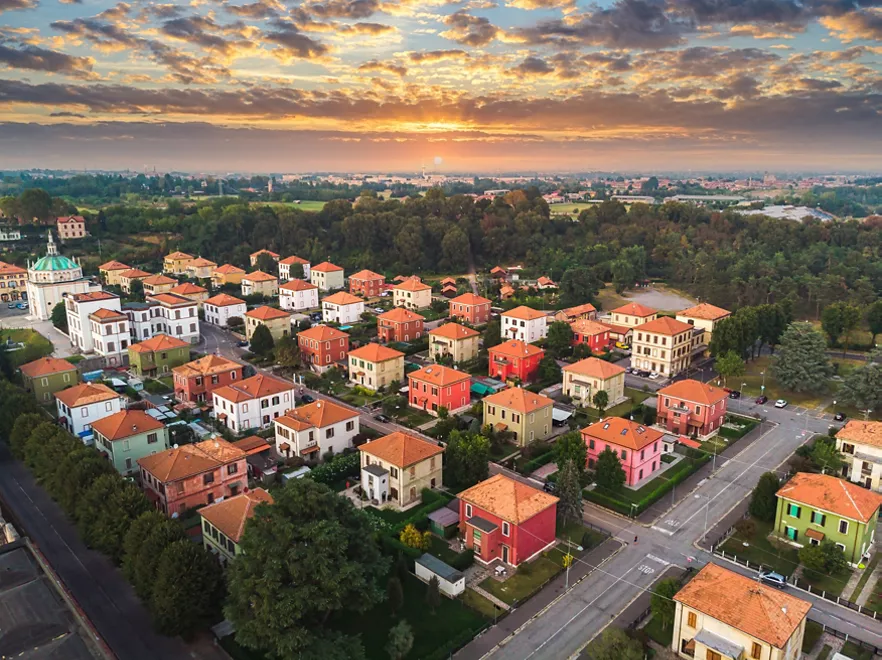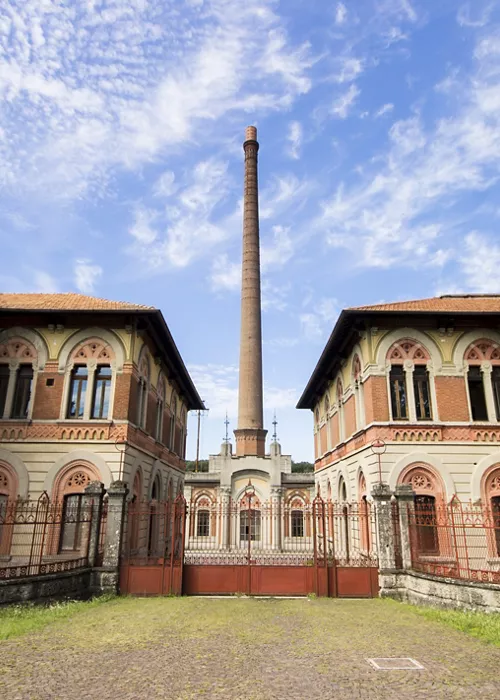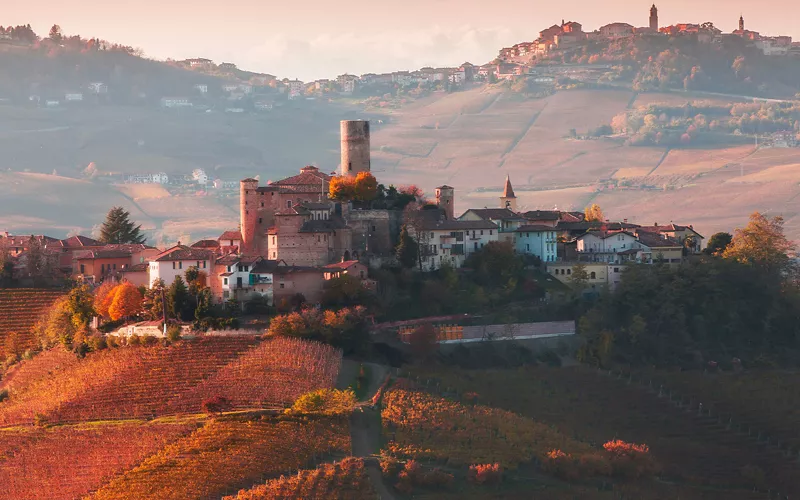The industrial village Crespi d'Adda
4 minutes
As Unesco World Heritage, Crespi d'Adda is the best-preserved workers' village in Europe, a small oasis of peace to explore slowly, with the rhythms of the past.
The location of Crespi d'Adda
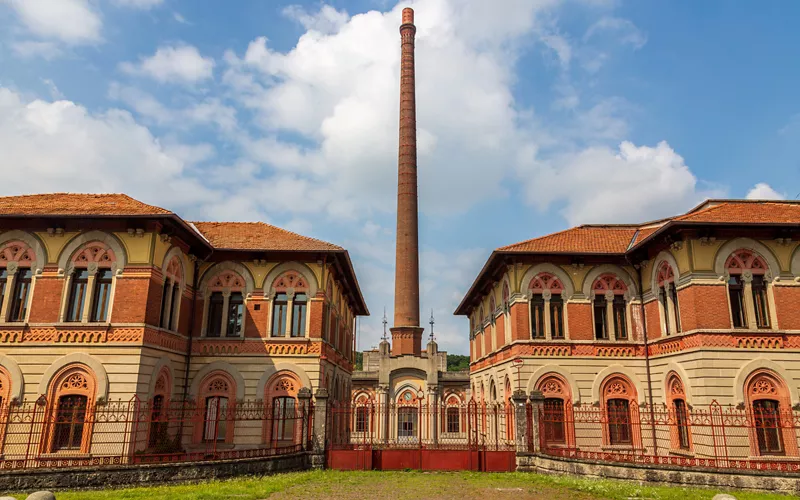
Crespi d'Adda stands on the southernmost tip of Island Bergamasca, a low plateau enclosed between the Adda and Brembo Rivers and the Pre-Alps.
Now part of the Lombardy municipality of Capriate San Gervasio, the industrial village Crespi d'Adda is the highest expression of the enlightened industrialists’ philosophy of the late 19th-early 20th century, who realised the importance of flanking factories with residential complexes to house employees and their families.
Crespi d'Adda village was built next to the Crespi family's textile factory and for decades was the perfect example of a society in which the owner saw to all the needs of the employees and their families, providing them with all the services necessary for community life such as a hospital, church, school, theatre, food and clothing shops.
History and information on Crespi d'Adda
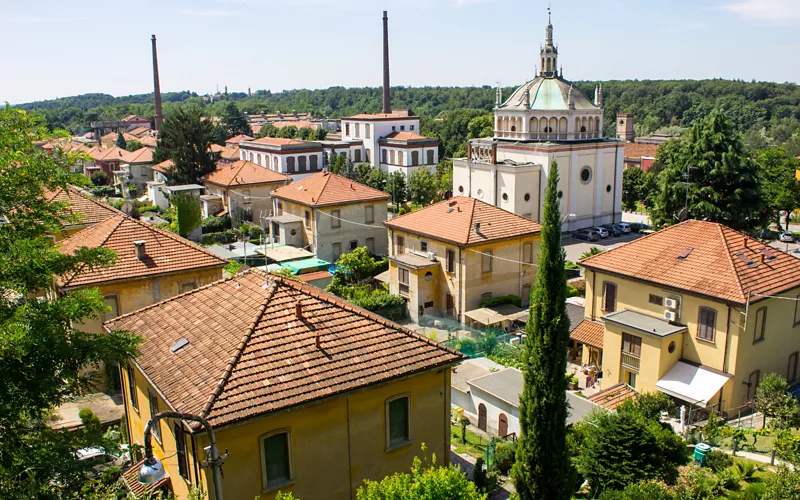
The worker village of Crespi d'Adda is inextricably linked to Cristoforo Benigno Crespi, one of the greatest pioneers of Italian industry. In 1877, the Crespi family decided to revitalise this area of Bergamo by building a textile factory, a cotton mill more specifically, flanked by a small fiefdom in which the house, and the master, were both a symbol of authority and benevolence towards the workers and their families.
The contribution of his son Silvio Benigno Crespi was crucial. After studying the operation of the German and English cotton mills, the young Crespi realised the importance of having a stable and satisfied workforce with a high standard of living and very advanced community services for the time.
The town became depopulated as industrial activity declined, but is still home today to a community largely descended from the historic cotton mill’s workers.
Why it is a UNESCO site
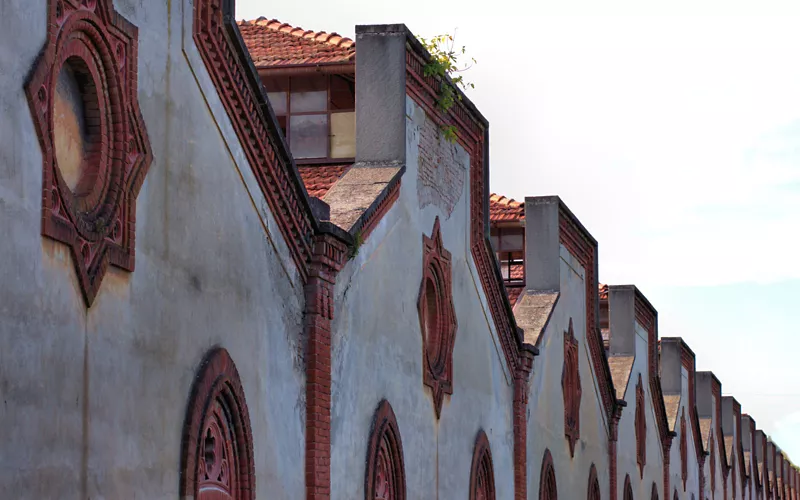
Crespi d'Adda is an outstanding example of the workers' villages that arose in northern Italy and Europe between the 19th and 20th centuries, and was added to the UNESCO World Heritage list in 1995 for having maintained its urban structure, a symbol of the industrial architecture of the period, unchanged over time.
Not only that, but it also symbolises a philosophy pursued by the great industrial philanthropists towards their employees.
Today the village is the object of study of Industrial Archaeology, as emblematic testimony of the industrial revolution which, with its driving force expended, left behind an era that prematurely turned into prehistory with architectural finds (the structures) and fossils (the plants, factories, power stations, etc.).
What to see in Crespi d'Adda

At Crespi d'Adda, the first thing that will strike you is the sensation that time has stopped. Your visit can start where it all began, in the neo-medieval style factory.
The Crespi d'Adda factory runs along the village’s main avenue, composed of four main bodies that corresponded to the different production phases, from spinning to the complementary departments ranging from weaving to dyeing.
The factory’s elongated shape was linked to the need to distribute mechanical energy to all the working areas, without interruption, from the hydroelectric plant built by Cristoforo Benigno Crespi on the left bank of the Adda River, behind the factory.
After a recent restoration, today it is back in operation and also open for guided tours.
On the opposite side of the street, following a rectangular grid of streets on three lines, you can stroll through the village made up of multi-family dwellings with gardens in different styles related to the role those who lived there had in the factory.
The school, clinic, public baths and the church of Crespi d'Adda are also in the centre of the village.
Watching over the village from above were the house of the doctor and chaplain. From there, you can enjoy a unique view of the workers' houses and Crespi d'Adda Castle, the medieval-style manor house that was the symbol of the Crespi family's power for decades.
Towards the south, in the more secluded area, are the employee cottages and the splendid villas for company executives. Continuing along the main road, you’ll reach one of the most suggestive places, the Crespi d'Adda cemetery dominated by the funeral monument of the Crespi family and surrounded by the tombs of their employees.
You can have a self-guided tour of the industrial village of Crespi d'Adda but guides are also available on weekends and holidays, more or less from mid-February to the end of November.
The hydroelectric power plant in the village is also worth a visit: for safety reasons, however, you must be accompanied by an authorised guide.
Admission to the cotton mill is instead only possible with a guided tour on specific days between May and November. Mark it down on your spring outing to-do list, you won’t regret it.

